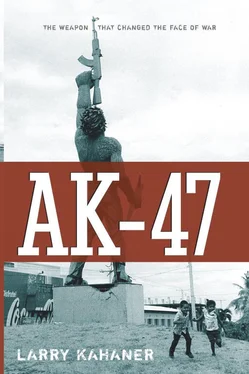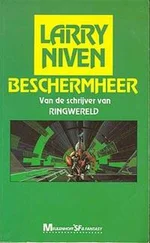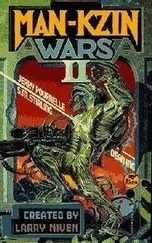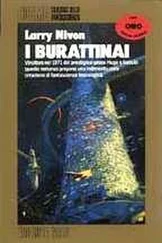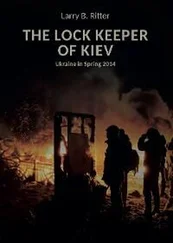Larry Kahaner - AK-47
Здесь есть возможность читать онлайн «Larry Kahaner - AK-47» весь текст электронной книги совершенно бесплатно (целиком полную версию без сокращений). В некоторых случаях можно слушать аудио, скачать через торрент в формате fb2 и присутствует краткое содержание. Город: Hoboken, Год выпуска: 2007, ISBN: 2007, Издательство: John Wiley & Sons, Inc., Жанр: История, military_history, на английском языке. Описание произведения, (предисловие) а так же отзывы посетителей доступны на портале библиотеки ЛибКат.
- Название:AK-47
- Автор:
- Издательство:John Wiley & Sons, Inc.
- Жанр:
- Год:2007
- Город:Hoboken
- ISBN:9780470315668
- Рейтинг книги:3 / 5. Голосов: 1
-
Избранное:Добавить в избранное
- Отзывы:
-
Ваша оценка:
- 60
- 1
- 2
- 3
- 4
- 5
AK-47: краткое содержание, описание и аннотация
Предлагаем к чтению аннотацию, описание, краткое содержание или предисловие (зависит от того, что написал сам автор книги «AK-47»). Если вы не нашли необходимую информацию о книге — напишите в комментариях, мы постараемся отыскать её.
AK-47 — читать онлайн бесплатно полную книгу (весь текст) целиком
Ниже представлен текст книги, разбитый по страницам. Система сохранения места последней прочитанной страницы, позволяет с удобством читать онлайн бесплатно книгу «AK-47», без необходимости каждый раз заново искать на чём Вы остановились. Поставьте закладку, и сможете в любой момент перейти на страницу, на которой закончили чтение.
Интервал:
Закладка:
Other advancing troops avoided major cities except when necessary to gain control of strategic bridges across the Tigris and Euphrates. The first indication that the U.S. plan was running into trouble—although it was eclipsed in the news by the stunning and swift march toward Baghdad—occurred in the bypassed city of Basra, Iraq’s second largest city, just north of the Kuwaiti border. As U.S. troops pushed onward, British troops were sent to secure it. To the surprise of military brass, it took two weeks of fighting for the British to enter the city, a conflict that included the largest tank battle the British had seen since World War II. Once Iraq’s tanks were destroyed, however, fighting still continued, turning into close-quarter urban warfare. British troops found themselves under constant small-arms attack from Iraqi army regulars and fedayeen fighters.
Fedayeen is the plural of an Arabic word meaning “one who is ready to sacrifice his life for his cause.” The first fedayeen in the eighth to fourteenth centuries were a group of Ismali Muslims belonging to the Shia sect of Islam, who terrorized the Abbasids, the Sunni Muslims who ruled Baghdad. This religious group was also known by the name hashishin because it was claimed that they put themselves into a fierce fighting-frenzy state by taking hashish before battles. (The modern word “assassin” is derived from their name, as many of their terrorist tactics involved murdering rulers.)
There have been several notable fedayeen groups throughout history. This latest group of fighters, Fedayeen Saddam, were handpicked by Hussein’s regime and put under control of his son Uday. Their loyalty to Hussein and the Baath Party assured they would fight to the death against any invader. This paramilitary group, whose numbers may have reached thirty thousand to forty thousand fighters, were used by Hussein to put down opponents and smuggle arms and drugs in the region. Despite their numbers, the international community knew little about them until Hussein pressed them into military service during the U.S. invasion. Their weapon of choice was the AK.
As the U.S. military pressed toward Baghdad, their supplies lagged behind. At about the 250-mile mark, supplies on the front lines became scarce—food, water, and fuel—and supply convoys had to play catch-up. These lightly armored trucks were easy prey for fedayeen ambushes. Although many of the convoys were given cover by helicopters, others were attacked by hit-and-run raids. Fuel tankers were favorite targets because they were slow-moving, and exploding, burning fuel had a dramatic effect.
American troops entered Baghdad certain that total victory was near. When the city fell on April 9, 2003, the fedayeen were in disarray, but many of them carried on the fight, mainly armed with AKs and RPGs. Something else occurred, however. Despite the Bush administration’s contention that the war would be over quickly, and the Iraqi people would welcome the coalition forces as liberators, what followed was a protracted guerrilla war for which U.S. forces were not properly outfitted.
The days following the taking of the capital city were marked by looting and an inability of American forces to maintain order. To Secretary of Defense Donald Rumsfeld, the Iraqi people, oppressed for decades by Hussein, were simply letting off steam.
Street violence continued. As U.S. forces attempted to contain it, many Iraqi people grew tired of what they saw as a growing American occupation. In addition, Hussein had gone into hiding and many citizens were afraid that the Americans would abandon them as they had done in the 1991 Gulf War, leaving an opening for Hussein to return to power, more vengeful against opponents than before. Moreover, many Iraqis were still angry about U.S. bombings during the 1991 war that had destroyed large sections of the country’s infrastructure. Electricity was flowing at less than a quarter of its prewar amount and damaged water treatment plants allowed raw sewage to flow into the Tigris River, a prime source of freshwater for many Iraqis. Many Iraqis blamed the United States for the widespread disease that followed. Although most Iraqis despised Hussein’s rule, at least they had had freshwater, electricity, and other basic services, none of which existed now.
During the uncertainty and chaos that followed the coalition’s swift victory, millions of small arms, mainly AKs, were looted or sold from Hussein’s huge armories. One of the main occurrences took place in May 2003, when L. Paul Bremer, head of the Coalition Provisional Authority, decided to dismiss all Baathist members from government positions and disband the Iraqi army. Although it may have been a correct decision—and perhaps the only logical one considering circumstances at the time—it caused major social disorder and violence as these groups let loose the nation’s small arms to almost anyone. Not unlike the situation during the disbanding of the Soviet Union, military officers and government employees sold the country’s weapons as a way to make money, and also to foment opposition against the government in power; in this case, the U.S.-run provisional government. The weapons landed in the hands of law-abiding but nervous civilians. They also reached Baathists loyal to Hussein and other opponents of the U.S. occupation who used them to run a protracted urban war.
As we’ve seen in many other countries, the street price of the AK is an accurate indicator of the degree of social order and citizen anxiety. In the months prior to the invasion, the price of an AK varied but stayed within a range of $150 to $300, with Chinese models on the lower end and Russian models at the high end. Oddly enough, despite Hussein’s dictatorship, private gun ownership in Iraq was fairly high, especially among the loyal Sunni Muslims, for whom a $150 license fee permitted as many small arms as they wanted. It was not unusual for households to maintain several small arms, almost always an AK among them, even in the large cities such as Baghdad and Fallujah. During the worst disorder just after the fall of Baghdad in March and April 2003, prices plummeted as military inventories flooded the market. In Basra, AKs were so ubiquitous that they were almost worthless, one of the causes of the British difficulties maintaining control of that city.
About six months later, as Baghdad settled down and coalition forces got a better handle on widespread looting and street violence, AK prices reverted to previous levels. By then, the bulk of AKs from military arsenals either had been destroyed by coalition forces or distributed to Iraqis. As the summer progressed and insurgent groups coalesced behind political and religious leaders in opposition to the Provisional Authority, demand grew again to the point where small arms were being imported from the neighboring countries of Iran and Syria.
As U.S. forces prepared for an unexpected and extended guerrilla urban war in Iraq, their own small arms seemed unsuited to the task. GIs were issued the standard M16A2, which followed the M16A1, the official and more formal name of the M-16, from the Vietnam era. The A2 had improved sights, a modified handguard, and a different “twist rate” in the barrel. It fired a three-round burst, but the most important difference was the ammunition. The A1 fired the standard U.S. 55-grain, 5.56 × 45mm round, designated as the M193 cartridge. NATO altered the round to fire a 62-grain bullet instead of the 55-grain and classified the cartridge as the SS109. The U.S. designation was the M855. (A grain is a unit of mass equal to 64.79891 milligrams. It is used for measuring bullets and gunpowder in the United States, while most other countries use the metric system.)
The SS109/M855 could not be fired from the old M-16 rifles because the bullet would not stabilize in the M16A1’s 1:12-inch twist rate. The A2 twist rate was 1:7-inch to accommodate the longer, heavier SS109/M855 bullet. (A 1:7-inch twist rate means that the bullet makes one complete twist in seven inches of travel.)
Читать дальшеИнтервал:
Закладка:
Похожие книги на «AK-47»
Представляем Вашему вниманию похожие книги на «AK-47» списком для выбора. Мы отобрали схожую по названию и смыслу литературу в надежде предоставить читателям больше вариантов отыскать новые, интересные, ещё непрочитанные произведения.
Обсуждение, отзывы о книге «AK-47» и просто собственные мнения читателей. Оставьте ваши комментарии, напишите, что Вы думаете о произведении, его смысле или главных героях. Укажите что конкретно понравилось, а что нет, и почему Вы так считаете.
